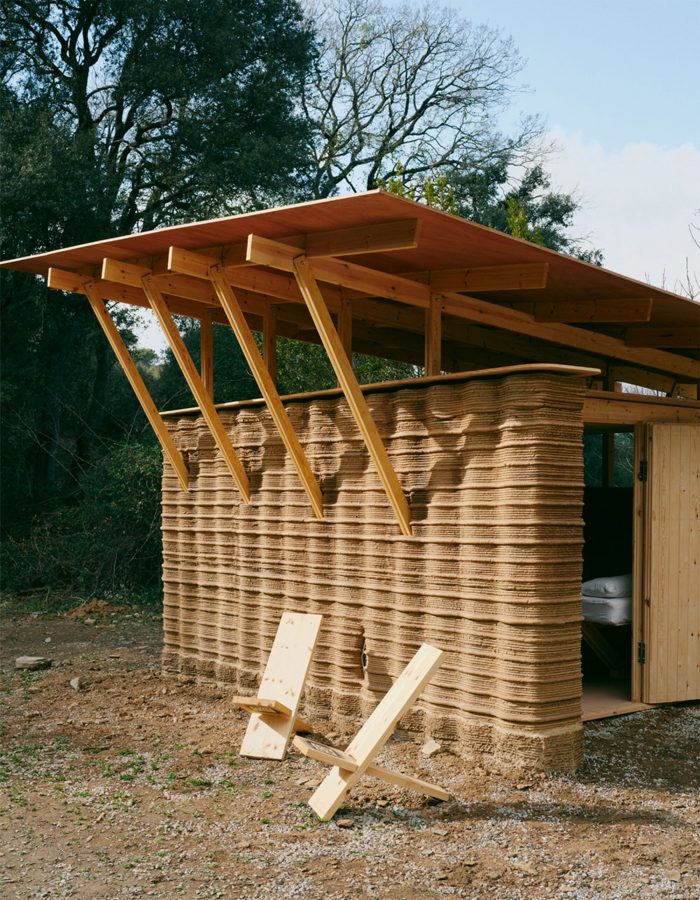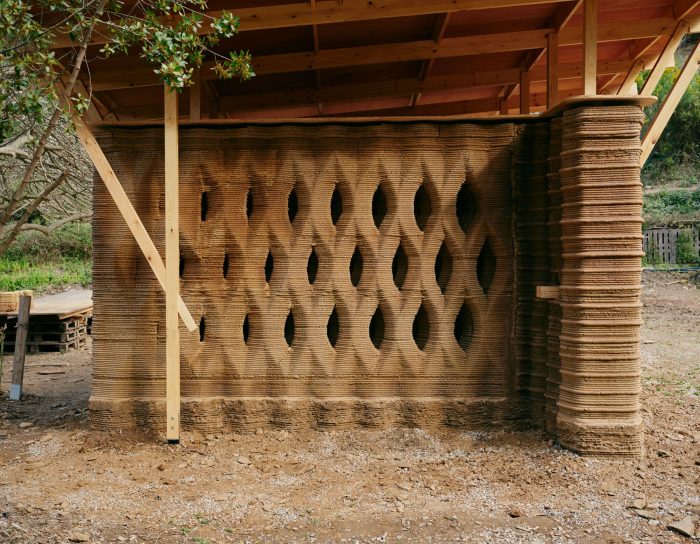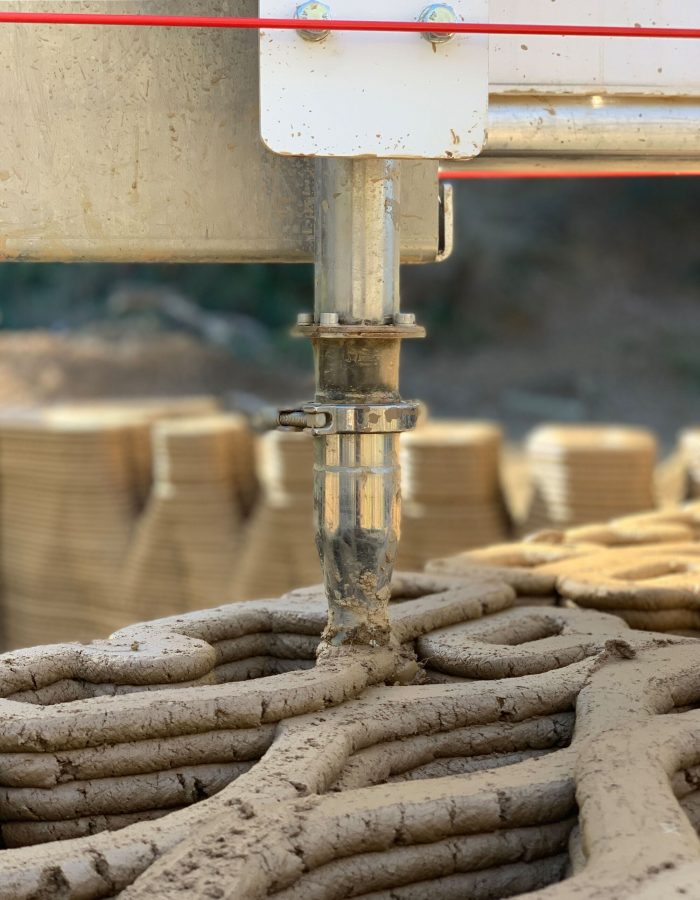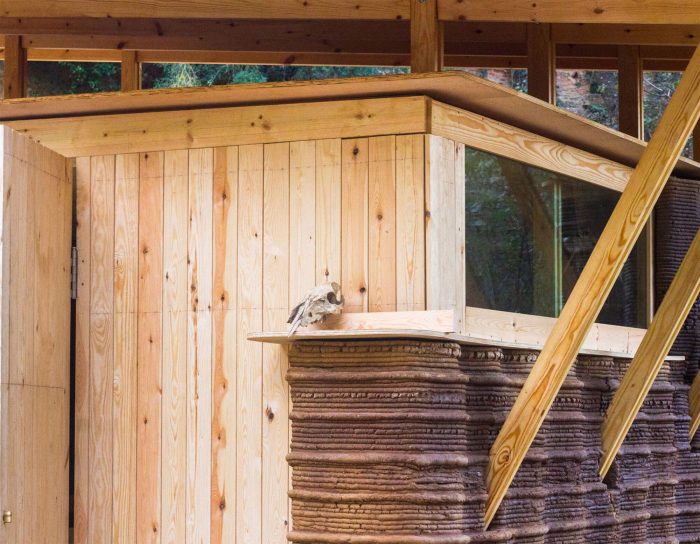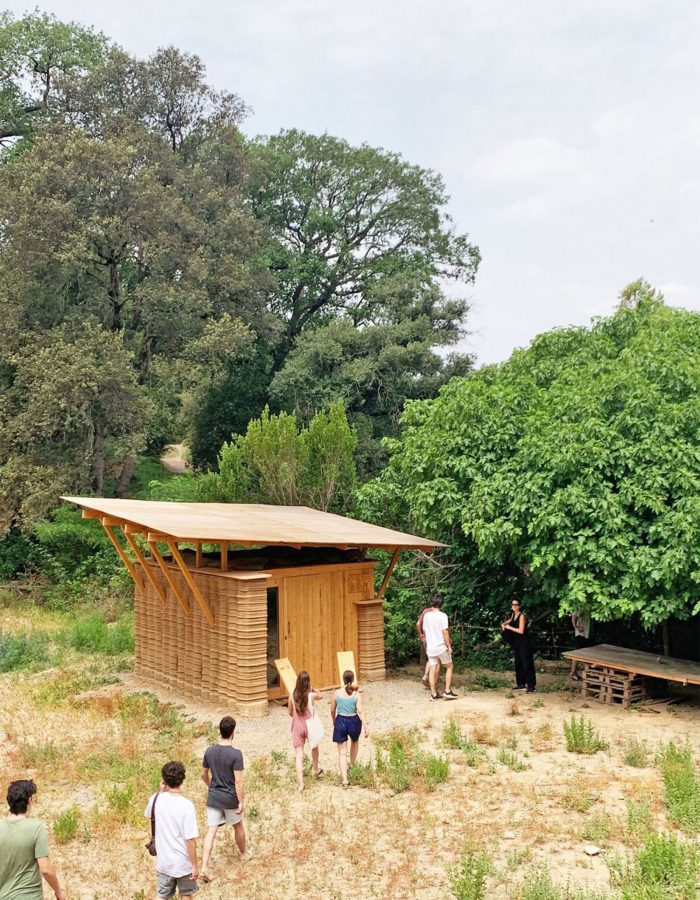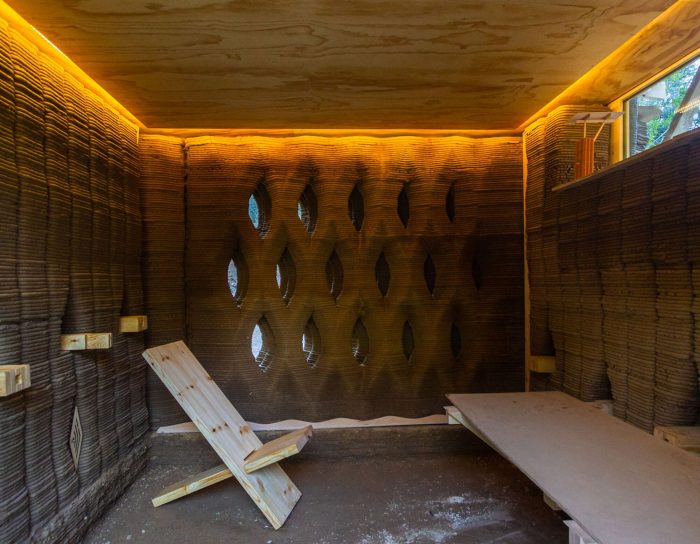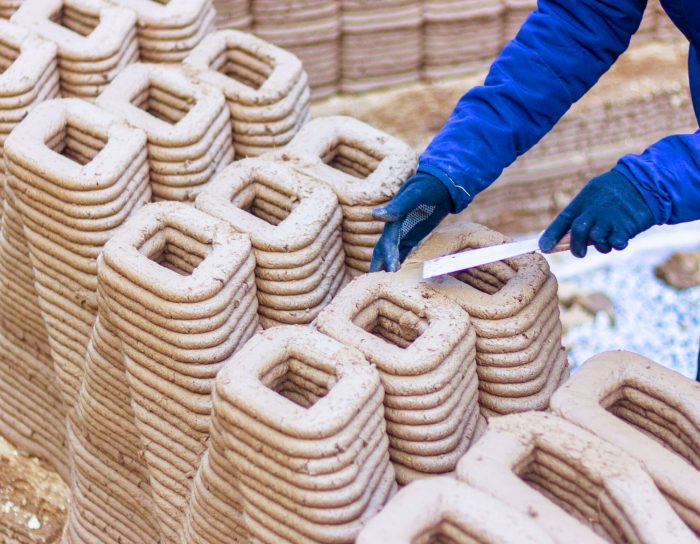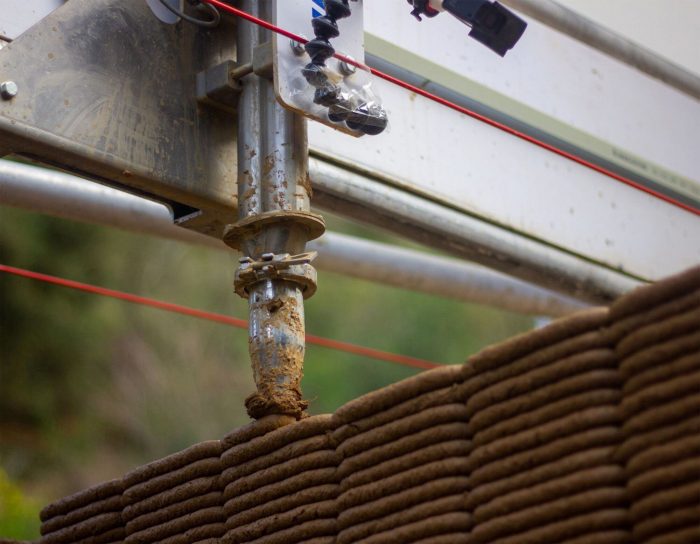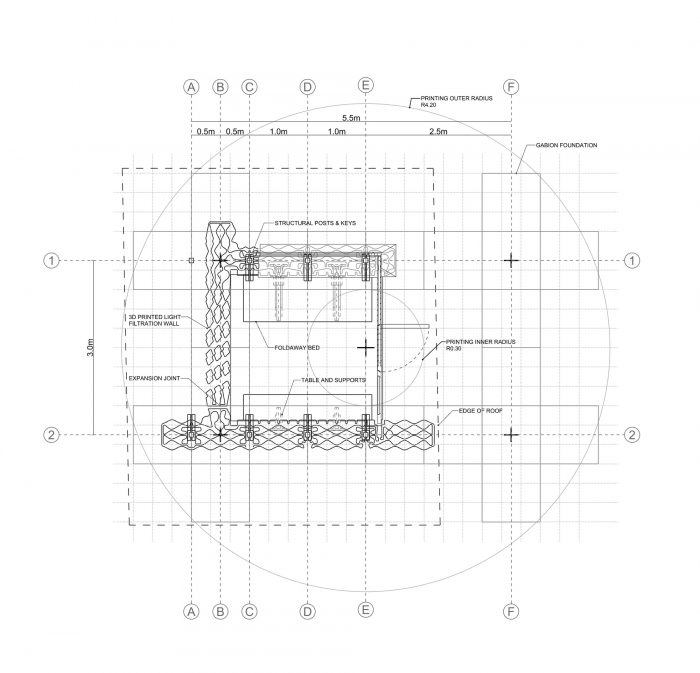现在,我们每年几乎需要两颗行星来维持我们这个社会的生产和消费模式。要改变这种状况,需要对我们到目前为止所发展的设计和建筑实践的方式进行转变。出于这个原因,我们考虑将增材制造(3D打印)与古老的粘土建筑实践相混合,以结合两种技术的最佳品质。
Nowadays we need almost two planets a year to sustain the production and consumption model that we have as a society. Changing this requires transformations in the way in which we approach design and construction practices developed until now. For this reason, we have considered mixing additive manufacturing (3D printing) with the ancient practice of building with clay, in order to combine the best qualities of both techniques.
TOVA是伊比利亚-美洲的第一个使用增材制造的粘土原型。这个应用研究项目是由一群来自加泰罗尼亚高级建筑研究所(IAAC)3D打印建筑研究生项目的学生和专业人士在西班牙巴塞罗那的Collserola公园,在Valldaura实验室的周围开发的。它的位置作为一个关于使用材料的方法,由背景提供。原型是用可持续材料建造的,使用现场获得的粘土和水,距离施工现场不超过500米。对土壤的特性进行了调查,以实现粘土和水百分比的良好混合,这些粘土和水将被用于墙体的压印,土工聚合物用于下部结构,木材用于屋顶。
TOVA is the first prototype of clay using additive manufacturing in Ibero-America. This applied research project was developed by a group of students and professionals from the 3D Printing Architecture postgraduate program of the Institute for Advanced Architecture of Catalonia (IAAC) in Collserola Park in Barcelona, Spain, in the surroundings of Valldaura Labs. Its location served as an approach regarding the use of materials as provided by the context. The prototype is built with sustainable materials, using clay and water obtained on site, within a radius of no more than 500m from the construction site. An investigation of the properties of the soil was carried out to achieve a good mixture in percentages of clay and water that would be used for the impression of the walls, geopolymers for the substructure and wood for the roof.
原型考虑到了执行性设计策略,在为期两周的设计讨论会上,学生们综合了研究阶段的经验教训,开发了原型的组成部分:采光口、空气流动、墙腔通风、导热性、屋顶结构、内置家具、防水和地板下部结构。
The prototype took into account performative design strategies, conceived during a two-week design charette where students synthesized the lessons learned in the research phase to develop the components of the prototype: light openings, air flow, wall cavity ventilation, thermal conductivity, roof structure, built-in furniture, waterproofing and floor substructure.
建筑业的3D打印在做出设计决策时具有定性测量的能力。TOVA的建造面积为9平方米,由示意图分布、时间物流和打印半径组成,18名学生组成的团队可以在两个月内完成。确定这一点的数据是在项目开始时的研讨会上讨论的。
3D printing in the construction industry has the capacity for qualitative measurement in making design decisions. With a built area of 9m2, TOVA is made up of a schematic distribution, time logistics and printing radius that the team of 18 students could be able to produce in two months. The data to determine this was discussed in a workshop at the beginning of the program.
拟议的设计在屋顶梁系统以及粘土墙的先天结构上有不同的结构考虑。墙体被设计成用T型和L型接头支撑,而不是用直线支撑。由此产生的封闭的内部空间是可居住的,耐气候的,并通过各种设计干预来适应气候。
The proposed design has different structural considerations in the roof beam system as well as the innate structure of the clay walls. The walls are designed to be braced with T and L joints, rather than straight lines. The resulting closed interior space is habitable, weather resistant and climatically adapted by the various design interventions.
该项目的目标是集体设计和建造一个1:1比例的住房原型,用3D打印的封闭式房间,使用粘土和木质屋顶,针对不同的环境条件密封。学生们参加了研讨会和简短的设计讲座,综合了研究期间所进行的工作。
该项目是在加泰罗尼亚高级建筑研究所(IAAC)与WASP合作开展的,该项目由BBSR / Zunkunfbau资助。
The objective of the project was the collective design and construction of a 1:1 scale housing prototype of a closed room printed in 3D, using clay and a wooden roof, sealed against different environmental conditions. The students participated in workshops and brief design talks, which synthesized the work carried out in the research period.
The project was carried out at the Institute of Advanced Architecture of Catalonia (IAAC) in collaboration with WASP, a project financed by BBSR / Zunkunfbau.
Architects: Posgrado 3D Printing Architecture IAAC
Area : 9 m²
Year : 2022
Manufacturers : Grasshopper, Rhinoceros 3D, WASP
Lead Architects : Estudiantes del programa 3D Printing Architecture 2021-2022
Iaac Students/Researchers : Adel Alatassi, Mariam Arwa Al-Hachami, Marwa Abdelrahim, Michelle Bezik, Leonardo Bin, Seni BoniDara, Deena El-Mahdy, Mehdi Harrak, Michelle Isoldi, Nareh Khaloian Sarnaghi, Mouad Laalou, Charles Musyoki, Eugene Marais, Hendrik Masjosthusmann, Nawaal Saksouk, Orestis Pavlidis, Juliana Rodriguez Torres, Aslinur Taskin.
Iaac Faculty : Edouard Cabay, Alexandre Dubor, Eduardo Chamorro, Vincent Huyghe, Ashkan Foroughi, Elisabetta Carnavale, Francesco Polvi, David Skaroupka, Bruno Ganem Coutinho, Marielena Papandreou, Guillem Baraut, Gloria Font, Lukas Fertig, Nikol Kirova, Lili Tayefi, Josep Alcover.
Collaborator/ Technology : Wasp
Graphics : Michelle Bezik
Program : Prototipo para refugio
City : Barcelona
Country : Spain



